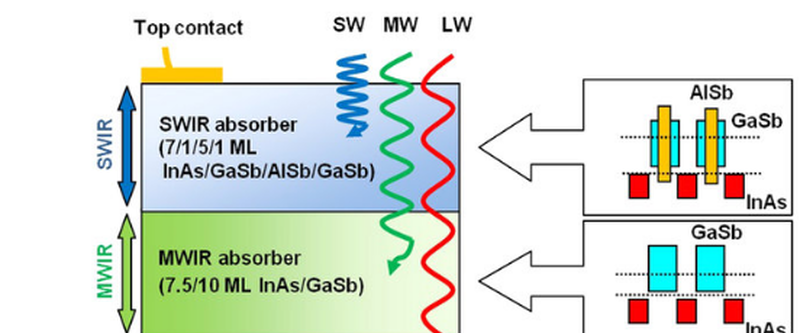You can classify infrared light into three broad ranges: short wave, medium wave, and long wave. Traditionally, sensors concentrate on one or two bands, and each band has its own purpose. Short wave IR, for example, produces images similar to visible light images. Long wave is good for thermal imaging.
Researchers have announced a new detector that, by adjusting a bias, can detect all three bands using a simple approach that stacks different absorption layers over a semiconductor substrate. The device only requires two terminals and is very efficient, although the efficiency varies based on the band.
We’ve covered infrared sensing before. We’ve even seen DSLRs hacked into IR sensors. This new research might be a bit much to duplicate in your garage. After all, it requires tellurium doped gallium antimonide substrates and sophisticated processing equipment. However, this research will probably lead to practical devices that will find their way into projects before too long.















So, we can put an end to the “remaining good eye” quips regarding laser cutters?
It will still need to be cooled down for thermal imaging purposes, right?
Yes. It’s not immediately obvious from the paper, but they tested their devices at 77K, 150K, and 210K.
Most of the charts are specifically 77K, which is the boiling point of Nitrogen, so I assume they are expecting the devices to be used at those temperatures.
Looks like I don’t get to play with it anytime soon then. You guys can keep making those ones with like 64 pixels. Or the RGB spotlight and camera one. I might try this one…
http://hackaday.com/2015/01/28/long-exposure-thermal-photography/
Great article by Brian Benchoff
I think I’ll tear apart my old scanner that took like 5 minutes to scan on hi-res.
Currently most cooled cameras use little stirling cycle chillers to drop the sensor down to 77K, the one in my camera takes about 6 minutes to cool down. It derives from when they used to use LN2 to cool the sensors.
That is great! Forgot about those. I wonder how cold a homebrew Stirling could get. With me, probably freezer temps. Hand-cranked beer fridge anyone?
Depends what your fabrication capabilities are… if you can do precision grinding, it will be just as good ;-)
I’m not sure how efficient of a stirling cycle unit one could make at home without specialized equipment. The one I took apart had incredibly high finish specs and tolerances on the Pistons and cylinders.
For hobby applications you can often use a Thermopile..The detectivity is about 3 magnitudes lower, though. They are also available with multiple spectral bands.
Their sensor seems to perform similar to HgCdTe Sensors with 3 stage peltier cooling and look very promising. Now lets hope they bring it to market for under 100USD for a single sensor.. but that won’t happen xD
Yeah I swung by my local hardware store, no tellurium doped gallium antimonide in stock.